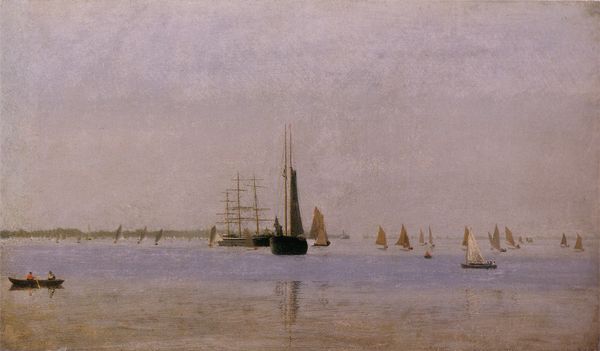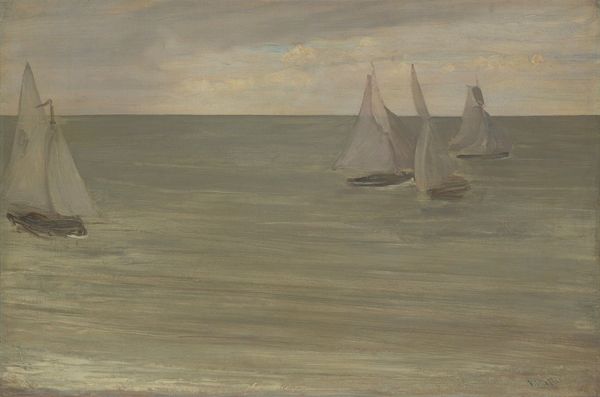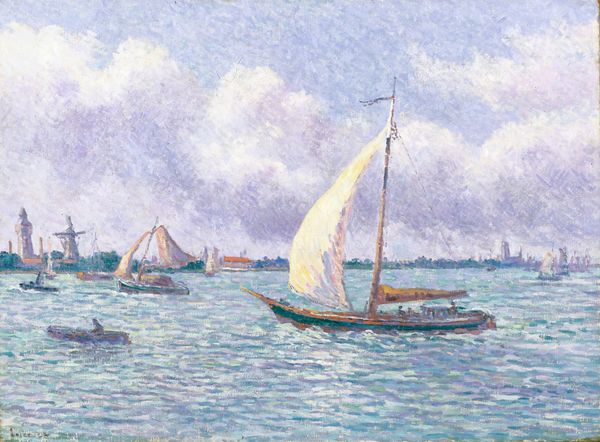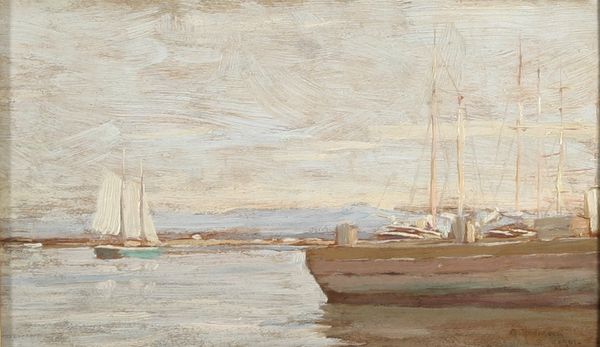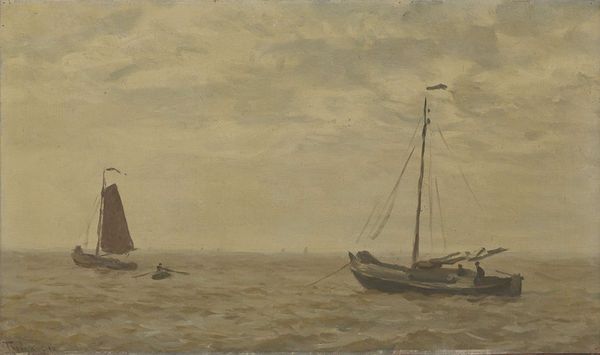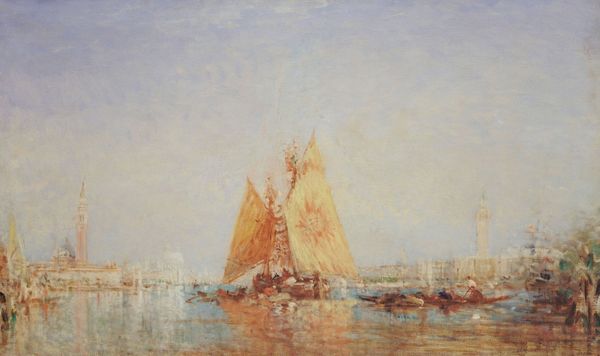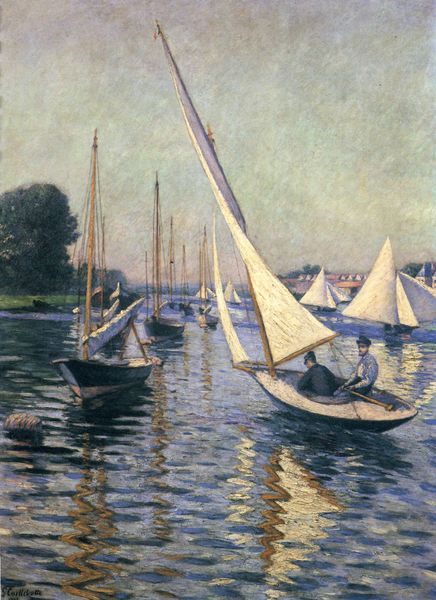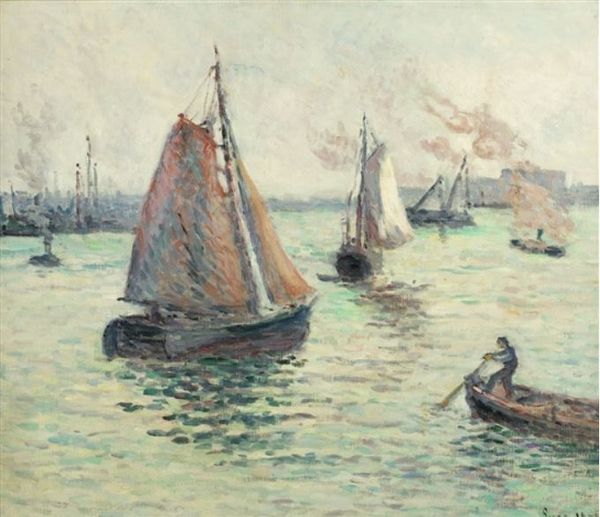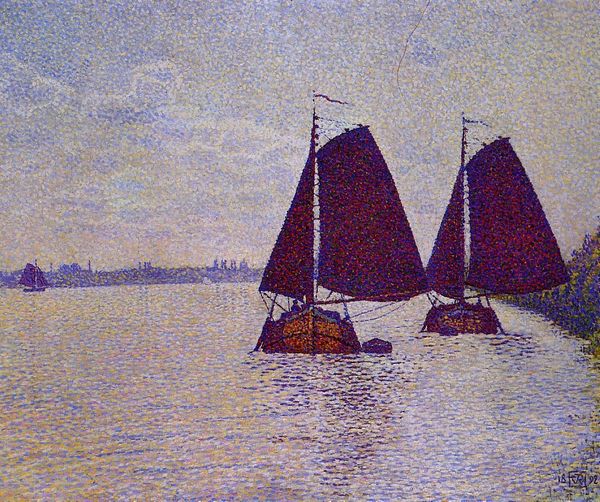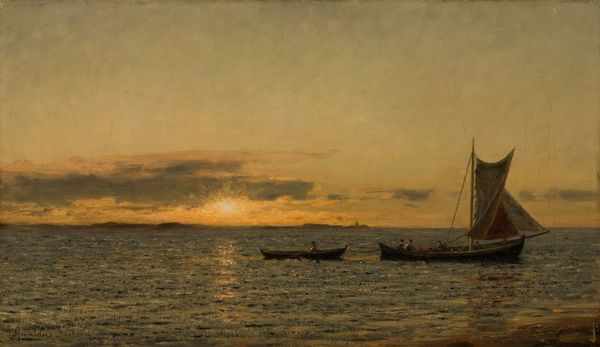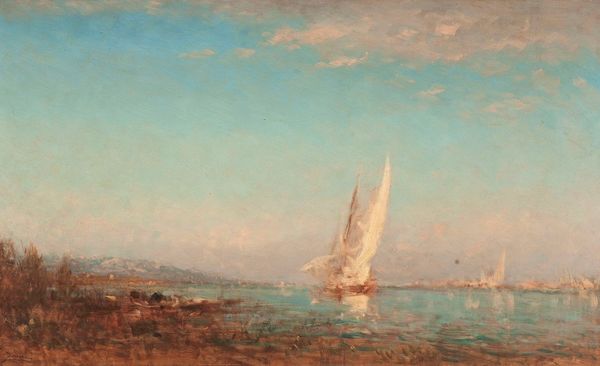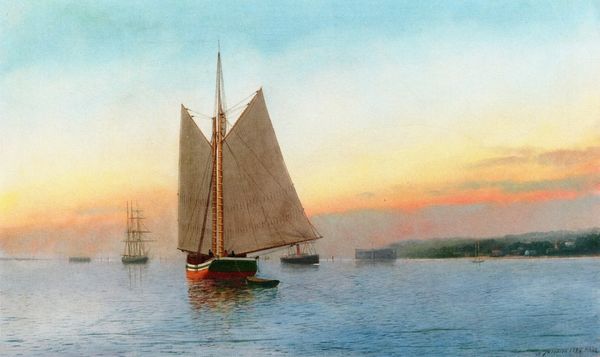
painting, oil-paint
#
painting
#
impressionism
#
oil-paint
#
landscape
#
oil painting
#
underpainting
#
france
#
abstraction
#
painting painterly
#
post-impressionism
Dimensions: 65 x 81.2 cm
Copyright: Public domain
Curator: Looking at Georges Seurat’s “Race in Grandcamp,” completed around 1885, one immediately notices the atmospheric, almost dreamlike quality achieved with oil paint on canvas. The location, Grandcamp, provides the backdrop for this coastal scene. Editor: Dreamlike is right. I get this hazy, end-of-summer feeling, like things are softening at the edges. All those little dots almost dissolve the boats and shore into memory, you know? Curator: Absolutely. This painting exemplifies Seurat's embrace of Post-Impressionism and his experiments with optical mixture. Observe how individual brushstrokes of different colors blend in the viewer’s eye to create a luminous effect. It's less about realistic representation and more about capturing a sensory experience. Editor: Yeah, like he’s trying to paint the *idea* of boats, the feeling of the ocean, instead of perfectly rendered details. I see the sails as ghost ships fading into the horizon, even though some art historians believe that "Race" in the title of this painting could mean 'regatta.' Curator: I agree. Seurat aimed to present a new, almost scientific, approach to capturing light and color based on theories prevalent at the time. Beyond any maritime competition implied in the title, think how he might see the "race" as an art experiment where one must carefully select colours and patterns to engage perception. Editor: Fascinating! It almost seems that even though there's something about sailboats or a regatta depicted, his approach, while analytical, adds some magic or, frankly, strangeness to his artwork. The foreground appears blurred; did he want us to keep a respectful distance? Curator: Seurat wanted us to reconsider how we perceive, not necessarily where to stand. His legacy challenged academic conventions, inviting greater participation from the viewer and liberating color as its own aesthetic end. Editor: I dig that. He’s messing with us. So cool that a painting seemingly about something so concrete as boats could, at its heart, really be about how we see in the first place. It feels both intensely thoughtful and somehow, beautifully melancholic.
Comments
No comments
Be the first to comment and join the conversation on the ultimate creative platform.
